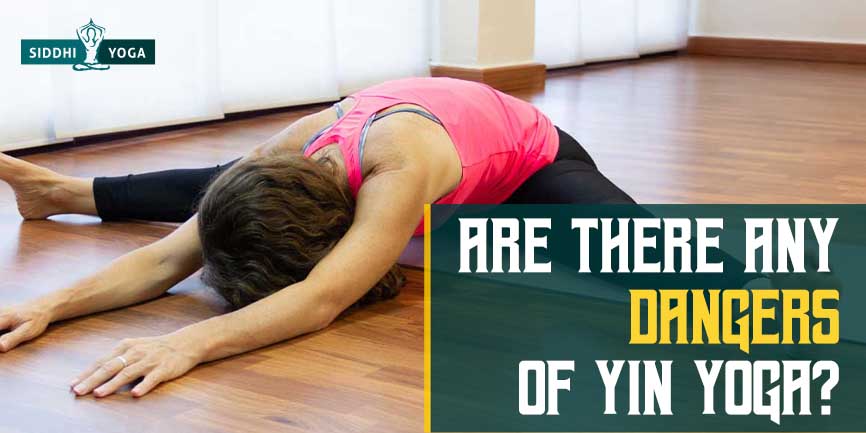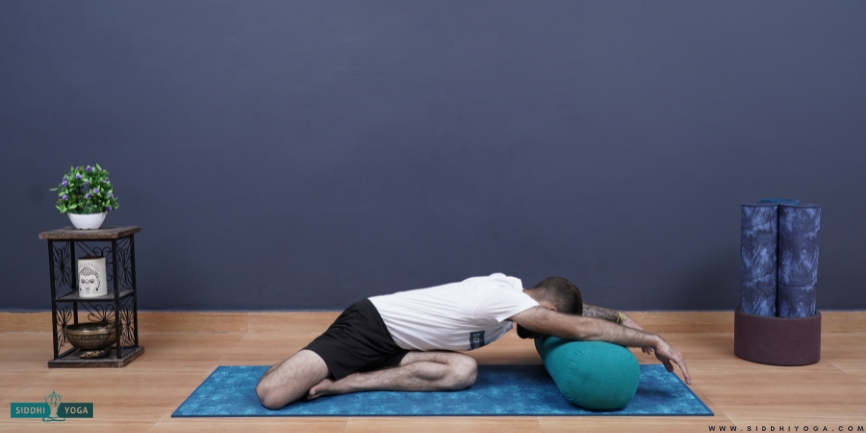
Is Yin yoga safe? What are the dangers of Yin yoga, and who should avoid Yin yoga? And are there alternatives to Yin yoga?
Introduction
Yin yoga bestows numerous mind and body benefits. It can help you prevent injury, improve your flexibility, enhance your strength and also calm your mind.
However as with any other complete body exercise routine, the gentle practice of Yin Yoga also has its risks and downsides.
Taking up Yin yoga without first being aware of the cons could put a dampener on this worthy practice, and what is supposed to be a source of health and healing may turn out to be the cause of harm.
Is Yin Yoga Safe?
Yin yoga is safe when its rules are observed seriously and its limitations acknowledged.
When done correctly it’s one of the best exercise routines to support the body. The problems show up when practitioners ignore the rules and tend to cross the limits.
With the right attitude and intention, Yin yoga is certainly an excellent practice.
One of the dangers of Yin yoga is that the poses are somewhat meant to take you to the edge of pain. A student may “try too hard” and exceed the body’s limits, causing harm to the body.
A sharp, electric pain shooting through your body is a sign that you are exceeding your limits. You may be over-stretching a muscle or putting undue pressure on a nerve.
Listen to your body’s signals and adjust your practice to its limitations. Find your edge and do not cross it. When a pose gets to be uncomfortable rather than relaxing, release and rest.
Instead of adopting an approach of ‘doing’ a Yin yoga pose, adopt the spirit of ‘being’ in it.
Be in the asana, at the moment, and try to relax. Enter and exit poses as effortlessly and gently as possible.
Yin yoga stretches may bring up deep-seated emotions, along with the pain. Not everyone is ready for it. If you find it overwhelming, gently come out of the pose and rest.
See Also: Yoga Teacher Training Online
Yin yoga is not a competitive activity.
If you realize that you are unable to perform any yoga asana, it’s best to avoid it. Students should not attempt a pose that is too advanced for them just because someone else can do it.
Exceeding your limits will only cause you injury. Do not try to “speed up” a session without taking adequate rest between sequences.
The safest way to avoid the dangers of Yin yoga is to learn the practice under the tutelage of a trained teacher.
Seek the advice of your doctor before you join a course. Communicate your medical issues to your yoga teacher too so that a course can be tailored to suit your fitness levels and health conditions.
Take your teacher’s advice and instructions seriously.
Takeaway
The dangers of Yin yoga can be avoided by seeking the advice of your doctor on your fitness levels and learning the poses from a trained instructor.
Who Should Not Do Yin Yoga?
Those who are pregnant or suffer from hypermobility or osteoporosis have a higher risk of sustaining an injury from the practice of Yin yoga. For these people, Yin yoga has to be practiced with greater caution, or avoided altogether.
A serious injury sustained in a joint may cause hypermobility, which takes time to heal.
The restraining connective tissue could be damaged. In such a situation, measures should be taken to strengthen the joint and not lengthen the connective tissue. For this Yin yoga is not the ideal form of exercise.
People with Ehlers Danlos Syndrome or Marfan Syndrome have a genetic condition with collagen, which allows free movement in a joint because it is very loose.
Such students need to focus on building stability and strength in joints and tissues, and not flexibility. All forms of yoga, including Yin yoga, should be practiced judiciously.
Hypermobile Yin yoga students should be taught to recognize the end-of-range motion of their joints and not cross that point. Sustained end-of-range movements for long durations are likely to cause injuries.
People with osteopenia, osteoporosis, low bone density, etc also have to exercise caution since many Yin yoga poses involve extended periods of flexion of the spine.
When the spine is in inflection, it can cause weak discs to bulge or vertebral compression fractures to occur in such individuals.
The extended duration of Yin yoga poses can result in increased ‘creep rate’ in vertebral bodies or disc tissues and damage to the spine.
The use of props can also increase the dangers of Yin Yoga for people with osteoporosis or other weak bone conditions.
If you have low bone density, osteopenia, or osteoporosis, find a Yin yoga instructor who can modify poses to make them safe and pain-free for you.
The poses can be modified to ensure flexion originates from the hip and not the spine. On your part, you should always check that your spinal alignment is correct when doing Yin yoga.
For pregnant women, their ovaries secrete a hormone called relaxin, the levels of which are highest during the first trimester.
One of the main functions of relaxin is to prevent contractions that might lead to premature birth. It also loosens ligaments in the pelvis and softens connective tissue for implantation of the fetus in the uterine membrane.
Secretion of relaxin can lead to hypermobility in pregnant women, resulting in injuries.
If you are practicing Yin yoga pregnancy poses, avoid going deep into the asanas. The goal is comfort and not range of motion.
Because the connective tissue is soft, it is easy to overstretch, stress, and damage your ligaments. Yin yoga poses can put stress on the pelvis and hips. Too much stress could destabilize the pubic symphysis or sacroiliac joints.
Thus, avoid deeper and longer holds.
For women in their third trimester, it is best to avoid Yin yoga pregnancy poses that require them to lie on their backs for a long period.
Lying supine can reduce oxygen levels in the blood of the baby due to the compression of the inferior vena cava.
Takeaway
Yin yoga has to be practiced with caution by people with certain medical conditions that can injure their bodies. A trained yoga instructor can help design a Yin yoga routine that can reduce risks.
Alternative to Yin Yoga
If you think that Yin yoga is not for you, you can find an alternative in Restorative Yoga – another gentle practice suitable for all ages.
Both styles enable you to let go of stress and connect with your inner self.
While Restorative and Yin yoga are both slow-paced, stress-relieving practices and have more or less similar benefits, they are very different.
Restorative Yoga

Restorative yoga uses props to support the body to release mind and body tension.
In Restorative yoga, props are used to support the body completely, while Yin yoga uses props only to deepen the pose and align the body. Restorative yoga uses more props than Yin yoga.
The practice aids in the healing process of the body after prolonged inactivity or injury, restoring normal mobility and flexibility.
By supporting the body with props and moving it gently without placing undue stress, Restorative yoga enhances detoxification, improves blood circulation, and prevents excessive scar tissue formation. In Restorative yoga, poses are held even longer than in Yin yoga.
While Restorative yoga supports your body and allows it to relax and heal, Yin yoga focuses on stretching deep connective tissue and releasing tension buried deep in them.
The stretches also unleash blocked or stagnant energy around the tissues by activating the energy meridians in the body. Unlike Restorative yoga, Yin yoga is designed for healthy people.
It challenges students to step outside their comfort zone and explore the edge of pain. It requires the practitioner to surrender to the pose, acknowledge the discomfort, and practice equanimity to still the mind and body.
While Yin yoga advocates active stretches, in Restorative yoga the goal is to be passive with added support.
The Bottom Line
Yin yoga is one of the best ways to relax and re-energize your body. It’s the perfect tool to balance your mental, physical, emotional, and energy levels. However, it can cause injuries when practiced without the right knowledge, approach or intention.
A good teacher can help mitigate that by taking the time to understand your fitness levels, diseases, and conditions, and tailoring a practice to suit your needs.
Our carefully structured Course on Yin Yoga has been created by some of the leading Yoga gurus. Rest assured you’ll get the right kind of guidance on all aspects from it. The course has regularly been rated 5 Stars by students who’ve enrolled for it. See the course here.